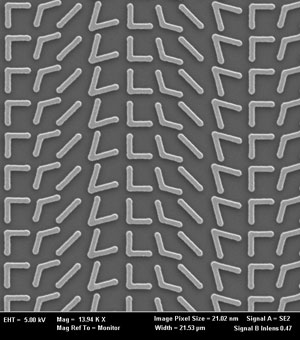

Metasurfaces based on subwavelength patterning have major potential for realizing arbitrary control of the wavefront of diffracted light by achieving local control of the phase amplitude and polarization. We discuss novel devices based on this technique; a salient feature is the ability to create, often with a single digital mask, an arbitrary analog phase profile. A variety of flat optical components will be presented, including lenses, polarizers, vortex plates, coatings, holograms and couplers with polarization invariant coupling efficiency.
Federico Capasso is the Robert Wallace Professor of Applied Physics and Vinton Hayes Senior Research Fellow in Electrical Engineering at Harvard University, which he joined in 2003. He received a doctorate in physics, summa cum laude, from the University of Rome in 1973. He then joined Fondazione Ugo Bordoni as a researcher from 1974 to 1976. He joined Bell Laboratories in 1976, where he held positions as a member of the technical staff (1977-1986), department head (1986-2000) and vice president for physical research (2000-2002). In 1997 he was made a Bell Labs Fellow for his scientific contributions.
Capasso has been engaged in basic and applied research on the quantum design of new artificial materials and devices, known as bandstructure engineering. This research culminated in his invention and demonstration of the quantum cascade laser, a device that has revolutionized spectroscopy and chemical sensing, opening up the mid-infrared spectrum to major applications of science and technology. He performed the first measurement of the repulsive Casimir force and optomechanical forces, including the first prediction of evanescent bonding and antibonding between optical components. Using plasmonics, he demonstrated the ability to widely control the wavefront of semiconductor lasers including collimation, multiwavelength beaming and polarization control.
He has co-authored more than 400 papers, edited four volumes and holds nearly 60 U.S. patents. He has done pioneering research on metasurfaces, demonstrating with his group the generalized laws of refraction and reflection and a new class of flat optical components such as aberration-free flat lenses.
Capasso is a member of the National Academy of Sciences, the National Academy of Engineering, the American Academy of Arts and Sciences and a foreign member of the oldest science academy, the Accademia dei Lincei of Italy. His awards include the King Faisal International Prize for Science, the IEEE Edison Medal, the Arthur Schawlow Prize in Laser Science, the Wetherill Medal of the Franklin Institute, the Robert Wood Prize of The Optical Society (OSA), the William Streifer Award of the Laser and Electro-Optic Society (IEEE), the Rank Prize in Optoelectronics (U.K.), the IEEE David Sarnoff Award in Electronics, the Duddell Medal of the Institute of Physics (U.K.), the Willis Lamb Medal for Laser Science and Quantum Optics, the Materials Research Society Medal, the "Vinci of Excellence" Prize (France), the Welker Memorial Medal (Germany), the New York Academy of Sciences Award and the Newcomb Cleveland Prize of the American Association for the Advancement of Science.
He is a fellow of OSA, SPIE, the American Physical Society and the American Association for the Advancement of Science (AAAS). He holds honorary doctorates from University Paris Diderot, France; Lund University, Sweden; University of Roma III, Italy, and the University of Bologna, Italy.
|
MARK YOUR CALENDAR
Date: Thursday, February 26, 2015
Time: 1 p.m. EST
|
Space is limited. Reserve your Webinar seat now at:
https://attendee.gotowebinar.com/register/7475683275517301249
After registering you will receive a confirmation email containing information about joining the Webinar.
|
SYSTEM REQUIREMENTS
PC-based attendees
Required: Windows® 8, 7, Vista, XP or 2003 Server
Mac®-based attendees
Required: Mac OS® X 10.6 or newer
Mobile attendees
Required: iPhone®, iPad®, Android™ phone or tablet, Windows 8 or Windows Phone 8
|
Visit Photonics Media to watch past webinars on demand to learn more about the latest developments in lasers, imaging, optics, biophotonics, machine vision, spectroscopy, microscopy, photovoltaics and more.
https://photonics.com/Webinars.aspx
|
|

|
|


|